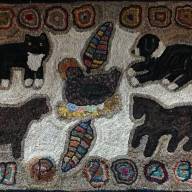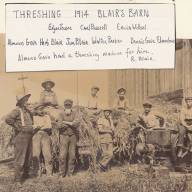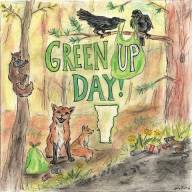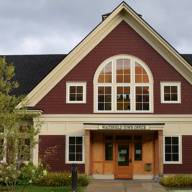In this time of planet uncertainty, there is a movement toward re-wilding and creating spaces for habitat. Embracing this does not have to be arduous, in fact it’s easy. Want more time on the weekends for fun instead of giving up half of the weekend mowing the lawn? Then you, too, can do more by doing less. Let your yard be a host for species and you will benefit too. Let go, and our earth’s natural balance will do the rest. Here’s how.
MOW WHERE YOU GO
Look at your space and figure out the pathways that you use and any play areas. Mow there only. Get creative with pathways if your space is large enough. Pathways through a meadow create a sense of whimsy and wonder. They can have destinations or shapes and they can change annually if you like. If you only have a tiny yard let the edges go and play with the shape of your mown area.
It is beneficial for insect species to leave wild spaces under trees, so try mowing a wide birth around a canopy. Mowing two stripes wide, about 5-6 feet will feel less claustrophobic for some. Also, if this seems like too much wildness for you, try an open fence such as a split-rail in front of your spaces and contain some of the chaos. Wildness does not have to mean out of control as these spaces can be managed.
Add some native trees, shrubs, or perennials of your choosing, if you like, or you can just wait and see what shows up, and pick and choose, removing any unwanted as they appear. You might want to mulch around new plantings with wood chips and mow around them the first couple of years until they get established, depending on size.
LET IT BE
When these spaces are let go, what happens is that succession will begin to take place. This means, in the first year, annual and biennial plants, such as wild daisy’s, jewel weed, fleabane and celandine, will begin to tuck themselves into spaces in the lawn.
The second year, the beautiful flowering perennials, such as asters, milkweed, Joe pye weed and goldenrod appear. I know what you’re going to say, but you are not allergic to goldenrod. It is the ragweed that blooms at the same time that becomes an allergen. Ragweed has tiny, lightweight, pollen that becomes airborne, and goldenrod’s pollen is heavy, and they do not rely on wind for dispersal; so therefore, cannot be the allergen. Goldenrods are of a huge benefit to so many pollinators.
The third year is where your brambles and saplings start to show up. These can be a nuisance but also fruitful and yummy. Perhaps leave a patch somewhere if you have the space. You can wait and see what woody saplings show up and pick and choose a few that are in choice spots, and cut around them.
ONCE A YEAR
Brush hog or weed-whack once a year, waiting at least until year two, to begin this cycle. This keeps the meadow from reforesting. This cycle will ensure perennial flowers, and remain manageable in terms of mowing. You can weed-whack if your space is small. When you do mow the wild spaces, the recommendation is to do it in the early spring, which is of benefit to many species that over winter in the foliage of last year’s growth. If that’s not possible because you are in a really wet spot, do it in late fall, after the latest blooms have gone by. This helps the bees with the late food that is so necessary.
When we allow spaces to re-wild, we let Mother Nature do her thing, and it’s amazing. We may see flowers that are new to us, or familiar as weeds. Try to look at them with fresh eyes to appreciate their beauty. All have value. We humans get the view and scent of the flowers, the insect world is in balance, the pollinators are happy, and it makes room for the natural balance of predators and prey by providing coverage for creatures to move through the landscape. This helps keep all kinds of infestations at bay, including ticks.
FEWER TICKS
When we have wild spaces, things are more in balance, and there is less likelihood of ticks. Predators such as owls, hawks, coyotes, possums, or foxes that hunt in meadows will help keep the mice and vole problem down. This in turn will likely keep the tick population in check, as they are a major host. Roving turkeys will also lower tick populations. You are actually reducing the likelihood of ticks, by increasing the wildness of your space.
These checks and balances cannot happen on a mown lawn, as it is a lifeless wasteland. If you are still not convinced, try standing on the edge of a mown lawn and a meadow. Listen with an ear toward each. The mown lawn will be silent, devoid of activity and the meadow will be teeming with sound. Fireflies cannot survive in lawn situations, but become abundant in a meadow situation, another amazing perk.
WHY NOT?
Famed ecologist, E.O. Wilson has theorized that we could potentially save our planet by preserving half of the earth for species. On a small scale, what can we as individuals do? Why not try giving up half your lawn space, and reaping the countless rewards of re-wilding parts of your property?
Zschau of Zone 4 Design, Moretown is a Vermont Master Naturalist and Vermont Certified Horticulturist who has been managing landscapes for over 35 years, and is still learning to let go.













